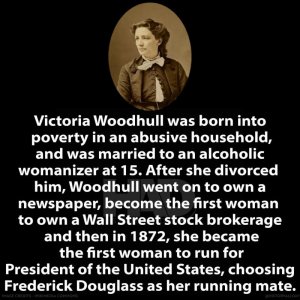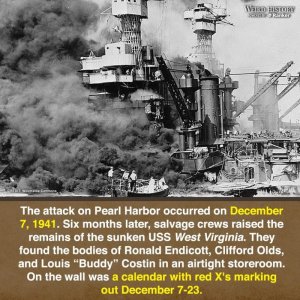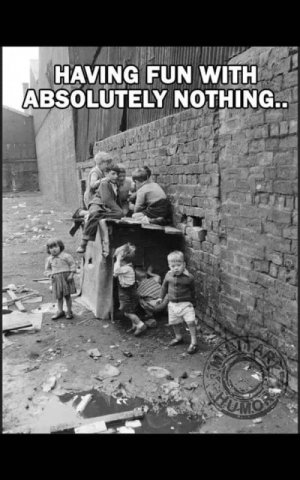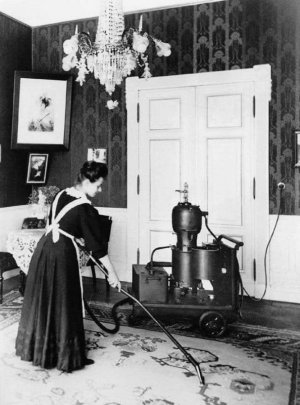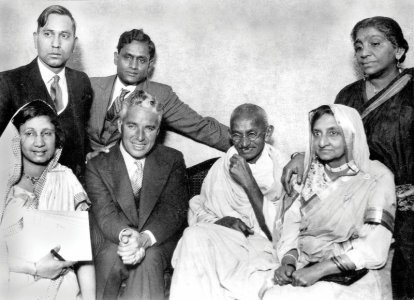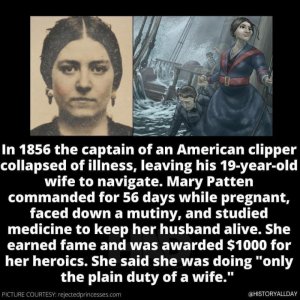You are using an out of date browser. It may not display this or other websites correctly.
You should upgrade or use an alternative browser.
You should upgrade or use an alternative browser.
History, anything goes, including pictures
- Thread starter mellowyellow
- Start date
GoneFishin
Well-known Member
- Location
- Canada 🏠⛺🚤
Famous Graves in Alberta - https://www.findagrave.com/geographic/10?state=823
Famous Graves in British Columbia - https://www.findagrave.com/geographic/10?state=824
Famous Graves in Manitoba - https://www.findagrave.com/geographic/10?state=825
Famous Graves in New Brunswick - https://www.findagrave.com/geographic/10?state=826
Famous Graves in Newfoundland and Labrador - https://www.findagrave.com/geographic/10?state=827
Famous Graves in Nova Scotia - https://www.findagrave.com/geographic/10?state=829
Famous Graves in Nunavut - https://www.findagrave.com/geographic/10?state=836
Famous Graves in Ontario - https://www.findagrave.com/geographic/10?state=830
Famous Graves in Prince Edward Island - https://www.findagrave.com/geographic/10?state=831
Famous Graves in Quebec - https://www.findagrave.com/geographic/10?state=832
Famous Graves in Saskatchewan - https://www.findagrave.com/geographic/10?state=833
Famous Graves in British Columbia - https://www.findagrave.com/geographic/10?state=824
Famous Graves in Manitoba - https://www.findagrave.com/geographic/10?state=825
Famous Graves in New Brunswick - https://www.findagrave.com/geographic/10?state=826
Famous Graves in Newfoundland and Labrador - https://www.findagrave.com/geographic/10?state=827
Famous Graves in Nova Scotia - https://www.findagrave.com/geographic/10?state=829
Famous Graves in Nunavut - https://www.findagrave.com/geographic/10?state=836
Famous Graves in Ontario - https://www.findagrave.com/geographic/10?state=830
Famous Graves in Prince Edward Island - https://www.findagrave.com/geographic/10?state=831
Famous Graves in Quebec - https://www.findagrave.com/geographic/10?state=832
Famous Graves in Saskatchewan - https://www.findagrave.com/geographic/10?state=833
Paco Dennis
SF VIP
- Location
- Mid-Missouri
Eisenhower's "Military-Industrial Complex" Speech Origins and Significance
JonSR77
Senior Member
We are watching a Babe Ruth documentary...which is wonderful.
Babe Ruth used to go to this NJ institution called Pal's Cabin...a hamburger and hot dog place that dated back to his era. It finally closed just about 5 years ago. It had pictures of Babe Ruth with the owner.
If I remember, he was either the very first or one of the first baseball players to get a HUGE salary.
It was $80,000 per year. I think that was in the late 1920's.
A reporter said to him...The President only makes $75,000 per year. Do you think it is appropriate for a baseball player to make more than the President of the United States?
Ruth looked at the reporter and said, "Well...I had a better year!!!"
Babe Ruth used to go to this NJ institution called Pal's Cabin...a hamburger and hot dog place that dated back to his era. It finally closed just about 5 years ago. It had pictures of Babe Ruth with the owner.
If I remember, he was either the very first or one of the first baseball players to get a HUGE salary.
It was $80,000 per year. I think that was in the late 1920's.
A reporter said to him...The President only makes $75,000 per year. Do you think it is appropriate for a baseball player to make more than the President of the United States?
Ruth looked at the reporter and said, "Well...I had a better year!!!"
JonSR77
Senior Member
Gay Military Heroes...
Old ideas about gay folks are just old ideas. They have no validity at all. Just like any racial prejudice is absurd. We are all people, period.
No, I'm not gay. I'm straight.
Very nice gay man on these boards. Showed a lot of kindness to this NJ loser.
This post is to honor him and all gay folks. We're all just people out here....
+
Perhaps the greatest warrior in world history....Alexander the Great. He was gay.
+
One of the greatest warriors of the 20th Century.... T. E. Lawrence (Lawrence of Arabia) - he was gay.
+
Sacred Band of Thebes...some of the greatest warriors of the ancient world. They were gay.
https://en.wikipedia.org/wiki/Sacred_Band_of_Thebes
+
The four people who are probably most responsible for winning WWII --- Churchill, Roosevelt, Eisenhower and math genius Alan Turing, who broke the Nazi engima code. Turing was gay.
https://www.bbc.com/news/technology-18419691
+
Twelve LGBTQ War Heroes and their stories
https://www.museumfacts.co.uk/12-lgbtq-war-heroes-and-their-stories/
+
I am 61, missed Vietnam by about 5 years. No military service.
----But, I did consult to help put on a concert for Vets. That was a project of one of Mariah Carey's back-up singers. He was gay.
I have PTSD. Not military related.
----Protected two different vets in the throes of PTSD episodes..kept them safe and out of jail, risked my safety to do it.
----Made donations to veterans hospital.
Other things for vets also...
Old ideas about gay folks are just old ideas. They have no validity at all. Just like any racial prejudice is absurd. We are all people, period.
No, I'm not gay. I'm straight.
Very nice gay man on these boards. Showed a lot of kindness to this NJ loser.
This post is to honor him and all gay folks. We're all just people out here....
+
Perhaps the greatest warrior in world history....Alexander the Great. He was gay.
+
One of the greatest warriors of the 20th Century.... T. E. Lawrence (Lawrence of Arabia) - he was gay.
+
Sacred Band of Thebes...some of the greatest warriors of the ancient world. They were gay.
https://en.wikipedia.org/wiki/Sacred_Band_of_Thebes
+
The four people who are probably most responsible for winning WWII --- Churchill, Roosevelt, Eisenhower and math genius Alan Turing, who broke the Nazi engima code. Turing was gay.
https://www.bbc.com/news/technology-18419691
+
Twelve LGBTQ War Heroes and their stories
https://www.museumfacts.co.uk/12-lgbtq-war-heroes-and-their-stories/
+
I am 61, missed Vietnam by about 5 years. No military service.
----But, I did consult to help put on a concert for Vets. That was a project of one of Mariah Carey's back-up singers. He was gay.
I have PTSD. Not military related.
----Protected two different vets in the throes of PTSD episodes..kept them safe and out of jail, risked my safety to do it.
----Made donations to veterans hospital.
Other things for vets also...
JonSR77
Senior Member
Lincoln - Only President With A Patent…
The inquisitive nature of Lincoln’s mind extended to mechanical devices. As president he test-fired weapons in the environs near the White House and he delighted in taking carriage rides to D.C.’s Navy Yard to see the bustle of activity amid maneuvering ships and swinging cranes. Lincoln’s connection to technology is enshrined in a way that other presidents cannot rival. As Congressman Lincoln he applied for a scientific patent for a device that could effectively buoy boats stuck on sandbars. This problematic situation was observed often by Lincoln in Illinois. He applied for the patent on March 10, 1849. On May 22, 1849, U.S. Patent No. 6,469 was officially approved. To date Abraham Lincoln remains the only president with a patent.
#NPS #AbrahamLincoln
Image: Patent model of Lincoln invention (Smithsonian Institution)
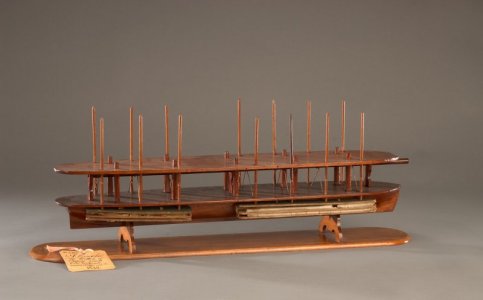
The inquisitive nature of Lincoln’s mind extended to mechanical devices. As president he test-fired weapons in the environs near the White House and he delighted in taking carriage rides to D.C.’s Navy Yard to see the bustle of activity amid maneuvering ships and swinging cranes. Lincoln’s connection to technology is enshrined in a way that other presidents cannot rival. As Congressman Lincoln he applied for a scientific patent for a device that could effectively buoy boats stuck on sandbars. This problematic situation was observed often by Lincoln in Illinois. He applied for the patent on March 10, 1849. On May 22, 1849, U.S. Patent No. 6,469 was officially approved. To date Abraham Lincoln remains the only president with a patent.
#NPS #AbrahamLincoln
Image: Patent model of Lincoln invention (Smithsonian Institution)

Pappy
Living the Dream
JonSR77
Senior Member
Falling Water - Frank Lloyd Wright House
https://fallingwater.org/
Fallingwater is a house designed by the architect Frank Lloyd Wright in 1935 in the Laurel Highlands of southwest Pennsylvania, about 70 miles (110 km) southeast of Pittsburgh. It is built partly over a waterfall on Bear Run in the Mill Run section of Stewart Township, Fayette County, Pennsylvania. The house was designed to serve as a weekend retreat for Liliane and Edgar J. Kaufmann, the owner of Pittsburgh's Kaufmann's Department Store.
After its completion, Time called Fallingwater Wright's "most beautiful job" and it is listed among Smithsonian's "Life List of 28 Places to See Before You Die". The house was designated a National Historic Landmark in 1966.In 1991, members of the American Institute of Architects named Fallingwater the "best all-time work of American architecture" and in 2007, it was ranked 29th on the list of America's Favorite Architecture according to the AIA.
The house and seven other Wright constructions were inscribed as a World Heritage Site under the title, "The 20th-Century Architecture of Frank Lloyd Wright", in 2019.

https://fallingwater.org/
Fallingwater is a house designed by the architect Frank Lloyd Wright in 1935 in the Laurel Highlands of southwest Pennsylvania, about 70 miles (110 km) southeast of Pittsburgh. It is built partly over a waterfall on Bear Run in the Mill Run section of Stewart Township, Fayette County, Pennsylvania. The house was designed to serve as a weekend retreat for Liliane and Edgar J. Kaufmann, the owner of Pittsburgh's Kaufmann's Department Store.
After its completion, Time called Fallingwater Wright's "most beautiful job" and it is listed among Smithsonian's "Life List of 28 Places to See Before You Die". The house was designated a National Historic Landmark in 1966.In 1991, members of the American Institute of Architects named Fallingwater the "best all-time work of American architecture" and in 2007, it was ranked 29th on the list of America's Favorite Architecture according to the AIA.
The house and seven other Wright constructions were inscribed as a World Heritage Site under the title, "The 20th-Century Architecture of Frank Lloyd Wright", in 2019.
Lewkat
Senior Member
- Location
- New Jersey, USA
The Babe hit every bar and restaurant on his way to Greenwood Lake, NY.We are watching a Babe Ruth documentary...which is wonderful.
Babe Ruth used to go to this NJ institution called Pal's Cabin...a hamburger and hot dog place that dated back to his era. It finally closed just about 5 years ago. It had pictures of Babe Ruth with the owner.
If I remember, he was either the very first or one of the first baseball players to get a HUGE salary.
It was $80,000 per year. I think that was in the late 1920's.
A reporter said to him...The President only makes $75,000 per year. Do you think it is appropriate for a baseball player to make more than the President of the United States?
Ruth looked at the reporter and said, "Well...I had a better year!!!"
Paco Dennis
SF VIP
- Location
- Mid-Missouri
Lewkat
Senior Member
- Location
- New Jersey, USA
RadishRose
SF VIP
- Location
- Connecticut, USA

Frank Herbert signing copies of Dune, the best-selling Sci-Fi novel of all time, 1971.
RadishRose
SF VIP
- Location
- Connecticut, USA

Ruins after San Francisco Earthquake, 1906.
Pappy
Living the Dream
JonSR77
Senior Member
The Silver Work of Paul Revere...
"His most unusual pieces were made before the Revolution, when he crafted a chain for a pet squirrel, an ostrich egg snuffbox, and a child's whistle. He also made brass gunner's calipers for two British officers, silver letters for the back of a chaise, surgical instruments, and a sword hilt."
https://www.paulreverehouse.org/rev...ual pieces were,instruments, and a sword hilt.
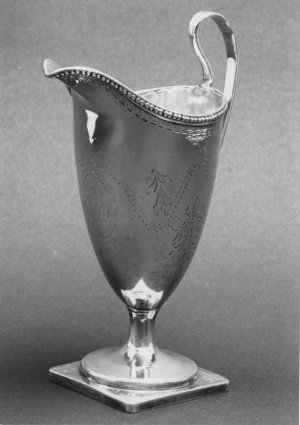
"His most unusual pieces were made before the Revolution, when he crafted a chain for a pet squirrel, an ostrich egg snuffbox, and a child's whistle. He also made brass gunner's calipers for two British officers, silver letters for the back of a chaise, surgical instruments, and a sword hilt."
https://www.paulreverehouse.org/rev...ual pieces were,instruments, and a sword hilt.

Pappy
Living the Dream
Pappy
Living the Dream
JonSR77
Senior Member
I am sure the original version was just fine.
"these cut-and-shaped carrots are rinsed in a chlorine wash to eliminate bacteria (including E. coli and Salmonella) that can cause food-borne illnesses."
really, no thanks. I would rather take the time to get a fresh carrot and do the cutting myself.
JonSR77
Senior Member
Almost 200 years earlier, Benjamin Franklin did the same thing with the lightning rod. Refused to get a patent, so that more people would be protected. If I recall, in the first year of use, it saved $250 million worth of damage ($ 10 billion in today's dollars and in just one year)...and, of course, saved countless lives.
Pappy
Living the Dream
GoneFishin
Well-known Member
- Location
- Canada 🏠⛺🚤
May 17 1642
Fort Ville-Marie was a French fortress and settlement established in May 1642 by a company of French settlers, led by Paul de Chomedey de Maisonneuve, on the Island of Montreal in the Saint Lawrence River at the confluence of the Ottawa River, in what is today the province of Quebec, Canada. Its name is French for "City of Mary", a reference to the Blessed Virgin Mary.
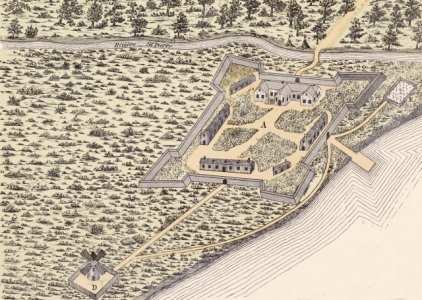
May 22 1784
Mississaugas of the Credit First Nation (Ojibwe: Mazina'iga-ziibing Misi-zaagiwininiwag, meaning: "Mississauga people at the Credit River") is a Mississauga Ojibwa First Nation located near Brantford in south-central Ontario, Canada. In April 2015, MCFN had an enrolled population of 2,330 people, 850 of whom lived on the MCFN Reserve. The first nation governs the 2,392.6-hectare parcel of New Credit 40A Indian Reserve known as Reserve 40B near Hagersville, Ontario. This reserve is located near the Six Nations of the Grand River in Brantford.
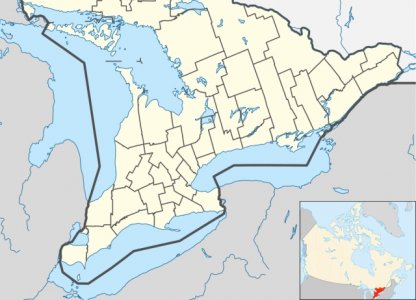
11 October–12 May 1869-1870
The Red River Rebellion (French: Rébellion de la rivière Rouge), also known as the Red River Resistance, Red River uprising, or First Riel Rebellion, was the sequence of events that led up to the 1869 establishment of a provisional government by Métis leader Louis Riel and his followers at the Red River Colony, in the early stages of establishing today's Canadian province of Manitoba. It had earlier been a territory called Rupert's Land and been under control of the Hudson's Bay Company before it was sold.
May 23 1873
The North-West Mounted Police (NWMP) was a Canadian para-military police force, established in 1873, to maintain order in the new Canadian North-West Territories (NWT) following the 1870 transfer of Rupert’s Land and North-Western Territory to Canada from the Hudson’s Bay Company, the Red River Rebellion and in response to lawlessness, demonstrated by the subsequent Cypress Hills Massacre and fears of United States military intervention. The NWMP combined military, police and judicial functions along similar lines to the Royal Irish Constabulary. A small, mobile police force was chosen to reduce potential for tensions with the United States and First Nations. The NWMP uniforms included red coats deliberately reminiscent of British and Canadian military uniforms.
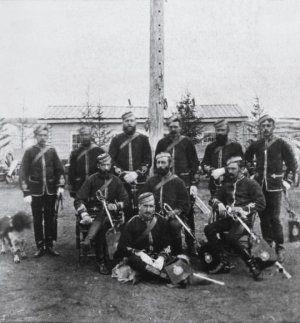
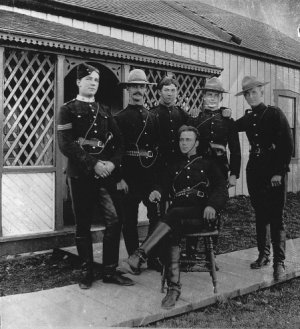
Fort Ville-Marie was a French fortress and settlement established in May 1642 by a company of French settlers, led by Paul de Chomedey de Maisonneuve, on the Island of Montreal in the Saint Lawrence River at the confluence of the Ottawa River, in what is today the province of Quebec, Canada. Its name is French for "City of Mary", a reference to the Blessed Virgin Mary.

May 22 1784
Mississaugas of the Credit First Nation (Ojibwe: Mazina'iga-ziibing Misi-zaagiwininiwag, meaning: "Mississauga people at the Credit River") is a Mississauga Ojibwa First Nation located near Brantford in south-central Ontario, Canada. In April 2015, MCFN had an enrolled population of 2,330 people, 850 of whom lived on the MCFN Reserve. The first nation governs the 2,392.6-hectare parcel of New Credit 40A Indian Reserve known as Reserve 40B near Hagersville, Ontario. This reserve is located near the Six Nations of the Grand River in Brantford.

11 October–12 May 1869-1870
The Red River Rebellion (French: Rébellion de la rivière Rouge), also known as the Red River Resistance, Red River uprising, or First Riel Rebellion, was the sequence of events that led up to the 1869 establishment of a provisional government by Métis leader Louis Riel and his followers at the Red River Colony, in the early stages of establishing today's Canadian province of Manitoba. It had earlier been a territory called Rupert's Land and been under control of the Hudson's Bay Company before it was sold.
May 23 1873
The North-West Mounted Police (NWMP) was a Canadian para-military police force, established in 1873, to maintain order in the new Canadian North-West Territories (NWT) following the 1870 transfer of Rupert’s Land and North-Western Territory to Canada from the Hudson’s Bay Company, the Red River Rebellion and in response to lawlessness, demonstrated by the subsequent Cypress Hills Massacre and fears of United States military intervention. The NWMP combined military, police and judicial functions along similar lines to the Royal Irish Constabulary. A small, mobile police force was chosen to reduce potential for tensions with the United States and First Nations. The NWMP uniforms included red coats deliberately reminiscent of British and Canadian military uniforms.


JonSR77
Senior Member
Nice Story about Lincoln and Family Pets...
In addition to his love for animals, President Abraham Lincoln, our 16th President, was known for his giving spirit. He allowed his sons, Tad and Willie, to keep as many pets as they wished. The result was a menagerie that included rabbits, turkeys, horses, and even two goats, Nanny and Nanko. In fact, Nanny and Nanko even rode with President Lincoln in the Presidential carriage.
One special animal in the Lincoln White House was Jack the turkey. Jack originally was on the Lincoln's dinner menu, but Tad became fond of the bird and pleaded with his father to spare Jack's life. President Lincoln relented, and Jack became part of the Presidential household. On Election Day 1864, while the Civil War raged close to Washington, D.C., a special booth was placed on the White House grounds so that soldiers serving nearby could vote. President Lincoln, his private secretary Noah Brooks, and Tad were watching from an upstairs window when they saw Jack strut out among the voters. "Why is your turkey at the polls? Does he vote?" Lincoln asked his son. "No," Tad answered, "he's not of age yet."
https://clintonwhitehouse4.archives...dition to his love,two goats, Nanny and Nanko.
In addition to his love for animals, President Abraham Lincoln, our 16th President, was known for his giving spirit. He allowed his sons, Tad and Willie, to keep as many pets as they wished. The result was a menagerie that included rabbits, turkeys, horses, and even two goats, Nanny and Nanko. In fact, Nanny and Nanko even rode with President Lincoln in the Presidential carriage.
One special animal in the Lincoln White House was Jack the turkey. Jack originally was on the Lincoln's dinner menu, but Tad became fond of the bird and pleaded with his father to spare Jack's life. President Lincoln relented, and Jack became part of the Presidential household. On Election Day 1864, while the Civil War raged close to Washington, D.C., a special booth was placed on the White House grounds so that soldiers serving nearby could vote. President Lincoln, his private secretary Noah Brooks, and Tad were watching from an upstairs window when they saw Jack strut out among the voters. "Why is your turkey at the polls? Does he vote?" Lincoln asked his son. "No," Tad answered, "he's not of age yet."
https://clintonwhitehouse4.archives...dition to his love,two goats, Nanny and Nanko.


